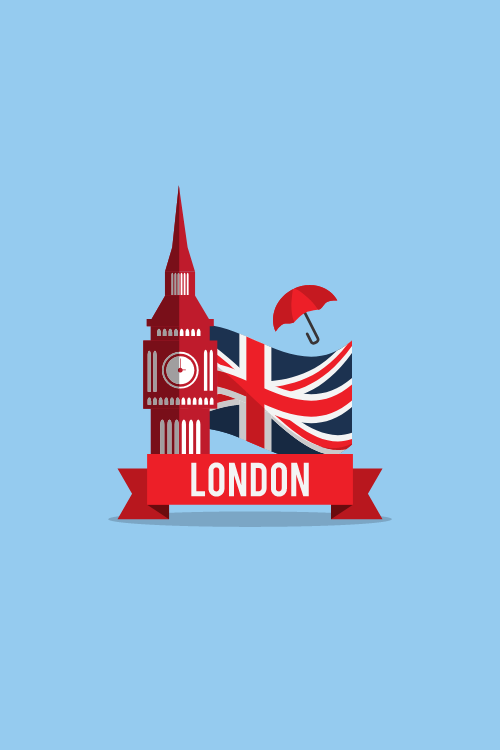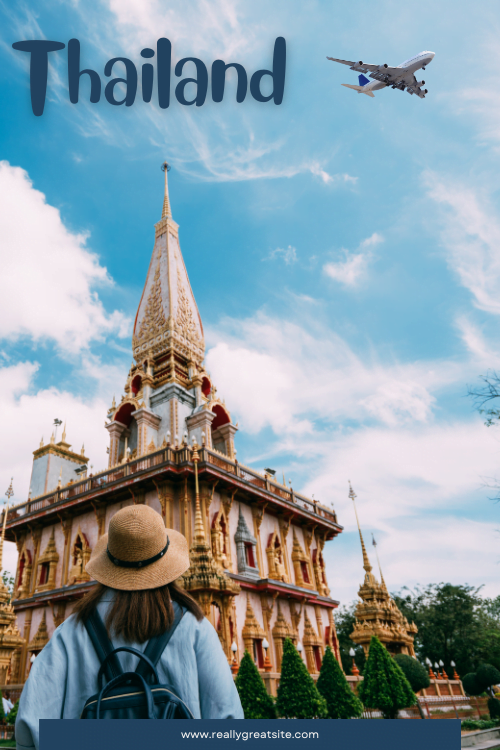Travel Guide
Cheap Places to Travel in November
You already know November can be a sweet spot for travel deals. But why? And how can you leverage that knowledge for an even better, cheaper trip?
It boils down to the shoulder season effect. In many parts of the world, November sits between the peak summer/fall rush and the busy holiday season. Demand drops. Airlines have empty seats, hotels have vacant rooms. Businesses need customers. So, prices naturally decrease to attract travelers like you.
But it’s not just about lower prices. You often get:
- Fewer Crowds: Imagine exploring ancient ruins or wandering museum halls without elbowing through masses. It’s a more relaxed, authentic experience.
- More Local Interaction: With fewer tourists around, locals may have more time and inclination to chat, offering richer cultural exchanges.
- Pleasant Weather (Often): While variable, many regions offer ideal temperatures in November – not too hot, not too cold. Goldilocks weather!
However, be aware of potential downsides:
- Unpredictable Weather: Some places might have higher chances of rain or cooler days. Pack accordingly!
- Reduced Services: Some seasonal tours, ferries, or attractions might operate on limited schedules or close entirely. Always check ahead.
Knowing this helps you plan smarter and set realistic expectations.
Global Deep Dives: Finding True Value Within Destinations
Listing countries is easy. Let’s pinpoint where within those countries offers the best value and experience in November.
Asia: Precision Budgeting
- Vietnam – North vs. Central vs. South:
- North (Hanoi, Ha Long Bay): November often brings dry, cooler weather, perfect for exploring Hanoi’s Old Quarter (free!) or cruising Ha Long Bay (look for deals on multi-day cruises). Hostels in Hanoi can be found for under $10, street food meals (like Pho or Bun Cha) for $1-2.
- Central (Hoi An, Hue): Weather can be potentially rainy, but crowds are thin. Hoi An’s enchanting lantern-lit streets are magical. Custom tailoring is affordable here. Guesthouses might run $15-$25. Consider Hue for its Imperial City history.
- South (Ho Chi Minh City, Mekong Delta): Generally warm and transitioning to the dry season. HCMC offers bustling markets (Ben Thanh – great for browsing, maybe buy elsewhere) and poignant war history museums (War Remnants Museum – low entry fee). Mekong Delta day trips offer glimpses of river life. Budget $40-$50/day for a comfortable backpacker style.
- Cambodia – Beyond Angkor:
- Siem Reap (Angkor Wat): Yes, the temples are the main draw (buy a multi-day pass for better value). November’s drier weather is ideal. Stay in Siem Reap town for budget guesthouses ($10-$20) and cheap eats at the night market.
- Phnom Penh: The capital offers sobering history (Killing Fields, S21 Museum – important but heavy) alongside a riverside promenade and vibrant markets. It’s generally cheaper than Siem Reap.
- Coastal Cambodia (Kampot, Kep): For a slower pace, head south. Kampot offers riverside relaxation and visits to pepper plantations. Kep is known for its crab market. Very affordable, expect basic bungalows for $10-$15.
- Indonesia – Bali’s Regions:
- Kuta/Seminyak: More developed, party atmosphere, generally pricier ($65-$70/day mentioned, but budget options exist). Good for surfing beginners.
- Ubud: Cultural heart, yoga, rice paddies. Can find budget homestays ($15-$25). Lots of healthy cafes, but prices can be higher than local warungs (eateries). Great base for exploring temples and nature.
- Canggu: Trendier, digital nomad hub, good mix of cafes and local spots. Accommodation similar to Ubud.
- North/East Bali (Amed, Lovina): Quieter, more traditional, great for diving/snorkeling. Often cheaper than the south. Expect $20-$30/day budgets here. November starts the rainy season, but often means afternoon showers, not all-day downpours.
Africa: Cultural Depth on a Dime
- Egypt – Planning Your Route:
- Cairo: See the Pyramids of Giza and the Sphinx (consider hiring a guide beforehand to avoid hassles). Explore the Egyptian Museum. Stay in Downtown Cairo or Zamalek for budget options. Use ride-sharing apps for transport. Cost estimation below $10/day seems extremely low, aim for $30-$50 realistically for budget travel including sites.
- Luxor: Open-air museum feel. East Bank (Karnak, Luxor Temples) and West Bank (Valley of the Kings, Hatshepsut’s Temple). Budget guesthouses are plentiful. November weather is ideal.
- Aswan: More relaxed pace. Felucca sailing on the Nile, Nubian villages.
- Red Sea (Sharm El-Sheikh/Hurghada): More resort-focused, potential for package deals ($60-$65/day estimate). Good for diving/snorkeling.
- Morocco – City Vibes vs. Nature:
- Marrakech: Intense, vibrant. Stay in a riad within the Medina (old city) for atmosphere (budget options exist, $20-$40). Eat tagine at Djemaa el-Fna square stalls for cheap. Be prepared for haggling.
- Fes: More traditional, known for crafts. Medina is a labyrinth (consider a guide for the first time). Generally cheaper than Marrakech.
- Chefchaouen: The famous “Blue City” in the Rif Mountains. Picturesque, relaxed.
- Atlas Mountains/Desert: Multi-day tours can be booked from Marrakech or Fes. Compare prices and inclusions carefully. Offers stunning scenery. November is good for hiking before winter snows hit higher elevations. Budget around $30-$40/day average.
The Americas: Strategic Choices
- USA – Specific City Savings:
- New Orleans: Focus on free activities: walking the French Quarter, enjoying street performers on Royal Street, exploring Jackson Square. Eat po’boys and beignets for cheap meals. Look for music venues with low/no cover charges outside Bourbon Street. Use the streetcar for cheap transport. Hostels/budget hotels outside the immediate Quarter save money.
- San Diego: Hit the beaches (Coronado, La Jolla Cove for seals). Explore Balboa Park (many museums have free Tuesdays, gardens are often free). Eat amazing, affordable Mexican food in neighborhoods like Barrio Logan. Public transit is okay, but a car helps explore further (factor in parking/gas). Budget stays are easier outside downtown.
- Charleston: Walk the Battery, admire Rainbow Row (free!). Look for shoulder season deals on historic inns. Focus on low-cost Gullah cuisine options. Free museum admission days mentioned are key!
- Peru – Altitude & Planning:
- Cusco: Acclimatize here for a day or two before Machu Picchu. Explore Saksaywaman ruins above the city (boleto turístico needed, check value). Find cheap set lunch menus (“menu del día”). Hostels abound ($10-$15).
- Machu Picchu: Book train tickets and entry permits well in advance, even in November. Consider hiking the Inca Trail (needs booking months ahead) or alternative treks like Salkantay for potentially lower costs. Aguas Calientes (town below MP) is pricey; minimize time there. Daily cost estimate of $26 likely excludes the expensive Machu Picchu excursion itself.
- Arequipa: Beautiful colonial “white city” at lower altitude. Gateway to Colca Canyon (condor viewing). Often cheaper than Cusco.
Europe: Shoulder Season Wins
- Portugal – Lisbon vs. Porto vs. Algarve:
- Lisbon: Use the metro/trams. Explore Alfama district on foot. Enjoy viewpoints (miradouros) for free. Eat at “tascas” for cheap, traditional food. Pastéis de Nata are an affordable treat. Hostels $20-$30. November weather is mild, maybe some rain.
- Porto: Generally slightly cheaper than Lisbon. Famous for Port wine cellars (tours/tastings cost). Ribeira district is picturesque.
- Algarve: Southern coast. November is off-season. Beaches will be empty, weather mild but maybe not for swimming. Great for coastal walks and enjoying seafood without crowds. Accommodation deals likely ($65/day estimate might be for mid-range, budget possible).
- Eastern Europe Bargains (Georgia, Montenegro): These offer incredible value. Tbilisi (Georgia) has unique architecture, sulfur baths, and amazing food (khachapuri!) for very low prices. Montenegro offers dramatic coastlines (Kotor) and mountains. Costs can easily be under $40/day. November means cooler temps, fewer tourists.
Pro Insight: “Cheap” is relative. A $50/day budget in Southeast Asia gets you far more than $50/day in Western Europe, even in November. Define your budget first.
Budget Tactics: Squeezing More Value
Basic tips are fine. Let’s get tactical.
- Mastering Flight Deals:
- Beyond Comparison Sites: Use Google Flights Explore map feature (put in your dates/region, see prices pop up). Set alerts months in advance on multiple platforms.
- Flexibility is GOLD: Flying Tuesday/Wednesday is usually cheapest. Consider nearby airports. Can you fly into one city and out of another?
- Understand Budget Airlines: Factor in all fees (bags, seat selection, even check-in). Sometimes a slightly pricier legacy carrier is cheaper overall.
- Smart Accommodation Choices:
- Hostels vs. Guesthouses vs. Budget Hotels: Hostels offer dorms (cheapest, social) and often private rooms (compare price to budget hotels). Guesthouses/Homestays offer local interaction, often include breakfast. Budget hotels (like Ibis Budget, Tune Hotels) provide predictable basics. Compare reviews and location.
- Location vs. Price: Staying slightly outside the absolute center can save significantly. Just ensure good, cheap public transport links.
- Eating Well for Less:
- Supermarket Power: Picnic lunches save a fortune. Grab local bread, cheese, fruit. Many hostels/guesthouses have kitchens – cook a simple dinner occasionally.
- Local Markets: Not just for souvenirs! Find fresh produce, local snacks, and sometimes food stalls cheaper than restaurants.
- Lunch Specials: Look for “menu del día” (Spain/Latin America), “plat du jour” (France), or similar fixed-price lunch deals. Often the best value meal.
- Affordable Local Transport:
- Walk Everywhere Possible: Best way to see a city and it’s free!
- Master Public Transport: Research local systems beforehand (metro, bus, tram). Buy multi-day passes if cost-effective. Avoid taxis/ride-shares for short distances.
- Overnight Transport: Buses or trains can save on a night’s accommodation (if you can sleep on them!).
The Connectivity Game Changer: Mastering eSIMs for Seamless Travel
Roaming charges aren’t just annoying; they can blow your careful budget completely. Relying on spotty hotel Wi-Fi is often impractical. Finding and setting up local physical SIMs eats into valuable exploration time and can be confusing.
This is where eSIM tech becomes your budget travel superpower.
Remember, an eSIM (embedded SIM) is a digital SIM profile you download to your compatible phone. (Unsure about compatibility? This ultimate eSIM compatibility guide clarifies).
Why is this? Because you proactively solve a major travel pain point before it happens, saving money and hassle.
- Total Cost Control: You buy a prepaid data pack for your destination before you go or upon arrival via Wi-Fi. You know exactly what you’re spending. A 7-day, 3GB plan for Spain might cost $10-$15. Compare that to potential roaming fees of $10 per day or more from your home carrier! The savings are substantial.
- Effortless Arrival: Purchase your eSIM via email or an app. Scan a QR code or click a link. Activate it. Land at your destination, switch your phone’s settings to use the eSIM for data, and boom – you’re connected to local networks instantly. No queues, no language barriers, no fiddling with tiny cards.
- Maintain Your Home Life (Digitally): Your physical SIM can often stay in your phone (if you have dual SIM capability – one physical, one eSIM). You might still receive calls/texts on your home number (check your provider’s roaming receive policies to avoid charges – enable Wi-Fi calling if possible before leaving). Or, keep your home SIM turned off entirely and rely on data for messaging apps (WhatsApp, Messenger) and VoIP calls.
- Ultimate Flexibility: Hopping between countries? Get a regional eSIM (e.g., Europe, Asia). Need more data? Top up easily through the provider’s app or website. Delete old eSIM profiles when done.
- Enhanced Security: No physical SIM to lose or be stolen.
Choosing and Using Your eSIM:
- Check Compatibility: Ensure your phone is unlocked and eSIM-capable.
- Choose a Provider: Look for providers covering your destination(s). Compare data amounts, validity periods (7 days, 15 days, 30 days), and price. Check reviews. (More on eSIM4 below).
- Purchase & Install: Usually done online. You’ll get a QR code or activation link via email/app. Follow the simple on-screen instructions on your phone (typically under Settings > Cellular/Mobile Data > Add eSIM). Do this before leaving home using Wi-Fi.
- Activate on Arrival: Once you land, turn on the eSIM line in your phone settings and enable data roaming for the eSIM line only (this sounds counter-intuitive, but it allows the eSIM to connect to local partner networks; you won’t be charged roaming by the eSIM provider). Turn off data roaming for your home SIM.
- Manage: Keep track of your data usage via your phone settings or the provider’s app.
Here’s a more detailed explanation of how eSIM technology functions.
eSIM vs. Physical Local SIM vs. Home Roaming – The Showdown:
| Feature | eSIM (Prepaid Travel Plan) | Physical Local SIM | Home Provider Roaming |
|---|---|---|---|
| Cost | Predictable, often very low. Pay upfront. | Variable, can be cheap, sometimes hidden fees. | Potentially VERY high. Unpredictable. |
| Convenience | Excellent. Install before travel, instant connection. | Fair. Requires purchase/swap on arrival. | Poor. Often requires setup, high cost risk. |
| Control | High. Know exact data/cost. Easy top-up. | Medium. Need to manage local account. | Low. Easy to overspend accidentally. |
| Flexibility | High. Easy multi-country/regional plans. | Low. Need new SIM for each country. | Medium. Often works globally (at cost). |
| Compatibility | Requires newer, compatible phone. | Works in almost any unlocked phone. | Works with your existing phone/plan. |
| Best Use Case | Most international trips <1 month. Multi-country travel. veut control & convenience. | Long stays (>1 month) in one country. Older phones. | Emergencies only. Maybe specific int’l day passes (check cost carefully). |
For the savvy November traveler looking to maximize value and minimize hassle, the eSIM advantage is clear.
Tailored Trips: Deeper Strategies for Your Style
Let’s refine those niche trip ideas:
- Backpacker Pro (SE Asia): Use overnight buses (book slightly ahead via apps like 12Go Asia). Alternate between dorms and cheap private rooms for balance. Learn a few basic local phrases. Pack light! Download offline maps (Maps.me, Google Maps offline). Get a regional eSIM.
- Family Value (US South): Rent a condo/Airbnb with a kitchen to save big on food. Look for deals on multi-attraction passes (like CityPASS). Pack snacks/drinks for park days. Build in downtime – travel can exhaust kids. Choose walkable areas or factor in transport costs.
- Romantic Budget Charm (Europe): Focus on experiences over expensive gifts: picnics with local wine, exploring atmospheric old towns, finding free viewpoints, enjoying street music. Consider apartment rentals for a cozier feel and kitchen access. Split costs on things like museum passes.
- Solo Smart & Safe (Anywhere): Stay in well-reviewed hostels with good common areas to meet people (if desired). Join free walking tours on day one. Keep valuables secure (money belt/secure bag). Share your itinerary with someone back home. Trust your intuition in new situations. An eSIM keeps you reliably connected for safety and navigation.
Your Final Pre-Flight Check: Preparedness
- Visas & Entry Requirements: Double-check months before travel. Don’t assume.
- Travel Insurance: Non-negotiable. Get coverage for medical emergencies, trip cancellation, lost luggage. Compare policies.
- Offline Resources: Download offline maps, translation apps, guidebooks, copies of important documents (passport, visa, insurance, bookings) to cloud storage AND printouts.
- Inform Bank: Let your bank/credit card companies know your travel dates/destinations to avoid blocked cards.
- Connectivity Plan: Sort your eSIM (or alternative) before you’re scrambling at the airport.
The Takeaway: Travel Smarter, Not Harder, This November
Going beyond the basic lists empowers you. Understanding shoulder season dynamics, digging into specific locations within countries, using smarter budget hacks, and embracing technology like eSIMs transforms your trip. You save money, reduce stress, and gain richer experiences.
Reliable, affordable connectivity is key to this smooth experience. Using an eSIM solution like those from eSIM4 lets you pre-purchase data for over 200 destinations. Imagine landing, switching on your eSIM profile, and instantly connecting to local networks – ready to navigate, share, and explore. With features like 24/7 support and easy setup via QR code or email link, it takes the guesswork out of staying connected. Explore plans tailored for your November adventure at esim4.com.
This November, don’t just travel cheap, travel smart. Use these insights, plan ahead, and enjoy an incredible, affordable adventure.







